T-TOWN Ink
1 Feb
A temple of tattoo art and history
WHEN LUCAS AND HIS WIFE LINDA opened El Templo Tattoos in Torremolinos in 1989, it was one of the first legal and licensed tattoo studios in Spain at the time.
After travelling around Europe, tattooing for their living expenses, Lucas (whose uncle Pancho was a tattoo artist in Belgium from 1965 to 1978) and Linda worked in Spain for a Dutch tattooist, Gipsy and Lady, before deciding to settle down and take over the studio they had started up with Prem a year before.
Since then they have gained a solid reputation throughout Andalucía, and their studio has become a true temple of tattoo art – with its own museum (El Templo Tattoos).
Lucas still travels regularly to international conventions in Germany, England, Belgium and the US, visiting long-time friends in the business, exchanging ideas and new trends, and fine-tuning their already high level of professionalism.
Here Linda answers some common questions about an art form that has, in recent decades, moved from urban outlaw culture (“skin graffiti”) deep into the mainstream of society –even to the point of becoming a high fashion statement.
What should I ask myself before having a tattoo?
For every person a tattoo has a different meaning. Some will have it to show off. Others, most people, will have it because they love tattoos. For others it must have a meaning. Unfortunately, tattoos have become a fashion and many youngsters are getting tattooed in the worst spots on the body. Mostly letters or stars – and it is getting boring! For young people it is important that your first tattoo not be in a visible place on the body, so that it does not affect your future income when you find a job.
What are some good reasons NOT to get a tattoo?
When you are ill, pregnant or not sure if you really want a tattoo. It’s bad when a client asks me if he or she can laser it off, before even getting the tattoo! Fashion or being influenced by friends is also a bad reason to get tattooed. Go alone or just with one friend to get your tattoo so you can decide and are not pushed into something you do not want.
How do I choose the right tattoo artist?
Always look out for the opening licence, which has to say “tattoos” and not “beauty salon” or something else. They must have a special licence from the town hall health department and a certificate for the person who is making the tattoos. Also, every tattoo studio must have a waiting room separated from the work spot for each working tattooist. More important, there must be a sterilising room with an autoclave, ultrasonic bath, sealing machine for the needles… The customer can ask to see the autoclave and they also have to sign a form where they are informed about all the aftercare, the address of the tattooist, any questions, etc. Most important is that you first look around, talk to the tattooist and ask advice. See if they really have an interest in doing your tattoo, small or big. All tattoos have to be done perfectly and suit the person in question. Also, the tattoo is not made just to look good today. It has to heal well and has to stay beautiful for many years. So listen to what they advise you and never include too much detail in a small tattoo. It just will become blurry.
Are tattoos safe?
If made in a proper tattoo studio, as explained before, yes they are safe. The tattooist must have at least five years experience as well as have been tattooing in more then just one place. A person can never learn all the tricks if not trained by a teacher. You need at least two years learning with a professional and five years experience in practice. Then you can say you know what you are doing. Never get tattooed by friends or hairdressers, or anyone who tells you he works cheaply. I would not pay a cent to get my skin ruined. Tattooists generally start out tattooing on themselves before touching other people, just out of respect.
How exactly is a tattoo done?
Simple explanation: tattoos involve entering ink or colour pigments into the second layer of the skin. This is done by hand or generally with a tattoo machine by using different types of needle combinations to penetrate the skin and enter the lines, shade and then the colours. The skin must not be scarred and has to heal up like it was before. So hairs still grow on top; skin still breathes as before. That is the reason why I love tattooing. A properly trained tattoo artist knows each type of skin and feels how deep he or she has to go without damaging the skin. Therefore it takes time to learn and, just because a person can draw on paper, does not mean at all that they can become a tattoo artist. It is a feeling you have, or don’t have. It is like people playing music: you are musical or you are not. Drawing on paper or painting walls is not similar to tattooing. In Spain this, in more then 75 per cent of the shops, is the big problem. They draw on the skin and after less then six months half the tattoo has disappeared or the colours are not well penetrated into the skin, and the customer gets to hear a lot of nonsense or the baloney that their skin did not accept ink. That does not happen. Every human being can have tattoos.
Was skin meant for tattooing…and what are the origins?
Who can really tell! The skeleton of the Iceman that was found in Alpen, in Austria on the Italian border, had tattoos all over his body. He was a white man from thousands of years ago. People have made tattoos in different ways, and for different reasons. In Europe, as well as later in the US and Australia, tattoos were banned for many years by the Christians, the same as they burned books.
Where does it hurt the most?
Tattoos only hurt where the skin is soft or loose, as well where the skin has to be able to move: the belly, ribs, under the arm, the inner side of the upper legs… Where the skin is fat and loose, it wobbles and we must enter far deeper, so there is more resistance, more pain and longer to finish the job. More pain: more pricey!
Where does it hurt the least?
People think it will hurt more on the bone, but that’s not true. Where the skin is thin, we just enter very superficially, so it hurts less. Best spot: arms, top back, lower legs.
What is the best time of year to get a tattoo?
Any time. No swimming, no sun – it’s all totally exaggerated. You can have a small tattoo whenever. It depends on where, the size, your lifestyle and other things. You can swim but must rinse afterwards with normal water. And just no longer then 30 minutes each time. The sun does not burn the skin. Clothes often do more damage to a healing tattoo than the beach or sun. These concerns are all because of the “new starting up tattooists” telling people nonsense. Nobody dares have a tattoo in the summer now, when in Spain it is often better at the beginning of your holiday than after when the skin is burned red and could be scarred by tattooing it. It is best to talk to the tattooist before waiting until the last day of the holiday when they will have to send you away without anything being done.
Is it okay to get a tattoo if you are sick?
No, it will hurt more and, depending on what illness you have, it is never a good idea – though there are, of course, exceptions.
Where are the most popular places on the body to have a tattoo? Are they different for men and women? Does it also vary depending on the age of the person?
It has been very popular for youngsters to be rebellious – on the neck, wrist, hands – but not very smart if you are still at school. We try to stop people doing it, but we can only advise. Sometimes we do refuse. Older people think more about the reason for their tattoo. A special spot at the moment is on the foot.
What are the latest trends in tattoos?
I am getting the feeling that, at last, the old style is coming back: bold lines, lots of colour. In Andalucía, it will take a bit longer.
Are tattoos considered a lot more socially acceptable than when you first started out?
Yes, far more. It’s not even comparable. As a woman I was not accepted at all in the main tattooing countries – the UK, Holland, Germany and Denmark. I was often treated as just the help, and had to fight for a spot to be seen. In other countries, like Spain, where there has never been a tattoo history, it was very easy as a woman to start tattooing.
Should parents allow their children to get tattoos
If the child is 18, yes. If they are 16, and you know they will do it anyway, depending on their mentality it is sometimes best to agree to take them to a proper place. That way the tattoo artist can take the responsibility to advise them properly what to do.
At what age would you be happy for your son/daughter to have a tattoo?
At least 18 but, to be honest, my 16-year-old daughter got her first tattoo at 16. After two months of asking for stupid tattoos, she came up with a proper, well thought-through tattoo. I did it when it suited her and she used it as a new start in her adolescent life.
What factors affect the price of a tattoo? Size? Colour?
Yes, and the place on the body as well. But really it is more about how much time is needed to do the tattoo. Can the tattoo be done in one session? If yes, they get a set price. If no, and more sessions over a few months are required, the price goes by the hour.
What after-care is necessary?
After-care is a very short period and not so much work as people think. You can give a general explanation but I still have to provide each customer with variations on the advice. It just depends on when, where, the kind of skin, the time of year, big or small tattoo, colour… The main thing is never let the tattoo come out in scabs, which is what happens during the first two days if people do not use the right type or quantity of ointment. They must sleep two nights with some cling-film on the tattoo so it does not dry up. After about five days the skin does not need to be kept moist anymore (there is a risk of infection if kept moist for too long). After the five days just let it be: it will heal fast. Be patient: it does take around four weeks to heal fully. This is very normal.
Can you go out in the sun?
Yes, just cover the tattoo with some kitchen-roll paper or paper serviette and keep it moist the first few days.
Can you shave your legs?
You do not have to as no hairs grow on top until the tattoo is fully healthy.
Is it a fairly simple process to remove a tattoo?
Not simple at all. It’s only interesting for finger tattoos or to get a better job. It takes more then a few sessions and many months of lasering off the tattoo. The other possibility is operative surgery, to cut out the skin and have a skin draft, but this leaves bad, ugly marks. This is worse then having most tattoos done in the first place! It is better to have them re-done in a specialist tattoo shop for covers.
How can people become a tattoo artist?
At the moment it is simple. Anybody can pay for a 40-hour course, required by the town hall: about 20 hours of info on tattoos and 20 hours on hygiene. But the person who gives the course has usually never tattooed in their life! The truth is that you need a tattooing market area of about 100 square miles (250 square kilometres) to be able to make a proper income. Every kid wants to become a tattoo artist and it becomes a nightmare. People are becoming scared, not knowing any more what are well-made tattoos. Most just see it as a way of earning fast money. It has been of concern to proper tattooists for some years now, and older tattooists are not so quickly prepared to teach youngsters any more. I taught a few people here in Spain, just to help. Just one out of all of them kept their word and their respect for the skin and the customer – respect for the profession.
A second example: I taught one man, he taught his girlfriend, and they separated because of jealousy that one was a better tattoo artist than the other. She started teaching her mother and brother, and he started teaching his brother. Then they even started up a business selling material, with all this stolen know-how. It all ended up that, from my know-how, about 10 tattoo studios were set up and they became one of the biggest suppliers and I did not earn a dime! Why would we teach people? You tell me! It became an international moneymaking market – very sad. It took me five years working after school, then later after work, to slave around in a tattoo shop, where I would repair tattoo machines, adjust them, clean needles, tubes and the work spot, drawing, soldering needles and sterilising. Nobody would teach you: they would just tell you what to do while they did the tattooing. The same as any other profession: you start low on the ladder. That is the only way you will get tattooing right. You must put time and effort into it.
What, and where, is the most interesting tattoo you have done?
There is no favourite tattoo, or special one. There are only tattoos that you really enjoy doing when the drawing is nice, and the client behaves and can handle some pain – then any tattoo will be special.
The worst tattoo is easier to explain: someone who could not stand a few seconds of tattooing, and cried over each line I did. It took three times longer than necessary, and then he walked away in the middle of the tattoo and got charged the full amount. He came back a few months later, and I thought, okay, he must have had a bad day. Don’t believe it: he was worse then the first time. Headphone, tranquilisers, nose sticker to get more air, etc. I could not believe it but thought, if it will help him, why not? It was okay. The tattoo was at last finished, and he paid again then said very calmly, “I’d like to make an appointment for a far bigger arm tribal tattoo. We have to do it in various sessions so I can handle it.” I told him it would better to forget about getting any tattoos, and sent him away.
Examples of Lucas and Linda’s creative work…


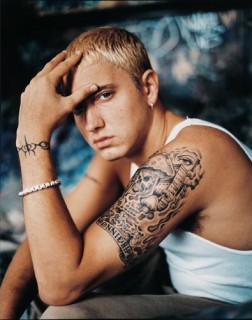

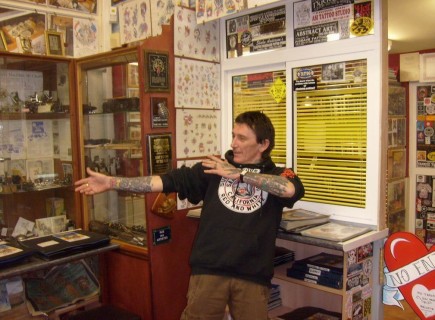
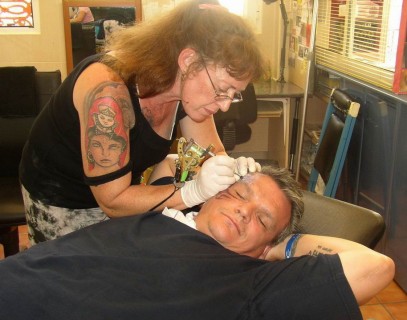

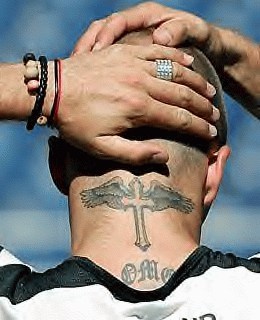

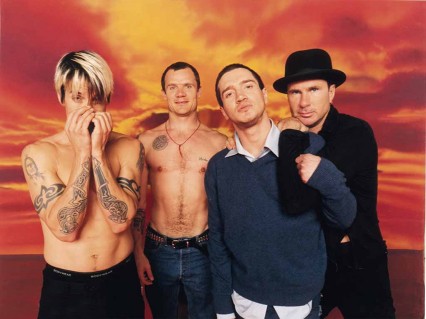




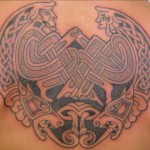

No comments yet